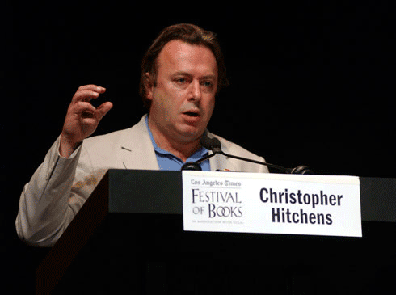
[Excerpt from Christopher Hitchens, god is not Great (New York: Hachette, 2007), pp. 278-280.]
On a certain day in the spring of 2006, President Ahmadinejad of Iran, accompanied by his cabinet, made a procession to the site of a well between the capital city of Tehran and the holy city of Qum. This is said to be the cistern where the Twelfth or “occulted†or “hidden†Imam took refuge in the year 873, at the age of five, never to be seen again until his long-awaited and beseeched reappearance will astonish and redeem the world. On arrival, Ahmadinejad took a scroll of paper and thrust it down the aperture, so as to update the occulted one on Iran’s progress in thermonuclear fission and the enrichment of uranium. One might have thought that the imam could keep abreast of these developments wherever he was, but it had in some way to be the well that acted as his dead-letter box. One might ad that President Ahmadinejad had recently returned from the United Nations, where he had given a speech that was much covered on both radio and television as well as viewed by a large “live†audience. On his return to Iran, however, he told his supporters that he had been suffused with a clear green light — green being the preferred color of Islam — all through his remarks, and that the emanations of this divine light had kept everybody in the General Assembly quite silent and still. Private to him as this phenomenon was — it appears to have been felt by him alone — he took it as a further sign of the immanent return of the Twelfth Imam, not to say a further endorsement of his ambition to see the Islamic Republic of Iran, sunk as it was in beggary and repression and stagnation and corruption, as nonetheless a nuclear power. But like Aquinas, he did not trust the Twelfth or “hidden†Imam to be able to scan a document unless it was put, as it were, right in front of him.
Having often watched Shia ceremonies and processions, I was not surprised to learn that they are partly borrowed, in their form and liturgy, from Catholicism. Twelve imams, one of them now “in occultation†and awaiting reappearance or reawakening. A frenzied cult of martyrdom, especially over the agonizing death of Hussein, who was forsaken and betrayed on the arid and bitter plains of Karbala. Processions of flagellants and self-mortifiers, awash in grief and guilt at the way in which their sacrificed leader has been abandoned. The masochistic Shia holiday of Ashura bears the strongest resemblances to the sort of Semana Santa, or “Holy Weekâ€, in which the cowls and crosses and hoods are borne through the streets of Spain. Yet again it is demonstrated that monotheistic religion is a plagiarism of a plagiarism of a hearsay of a hearsay, of an illusion of an illusion, extending all the way back to a fabrication of a few nonevents.
Another way of putting this is to say that, as I write, a version of the Inquisition is about to lay hands on a nuclear weapon. Under the stultified rule of religion, the great and inventive and sophisticated civilization of Persia has been steadily losing its pulse. Its writers and artists and intellectuals are mainly in exile or stifled by censorship; its women are chattel and sexual prey; its young people are mostly half-educated and without employment. After a quarter century of theocracy, Iran still exports the very things it exported when the theocrats took over — pistachio nuts and rugs. Modernity and technology have passed it by, save for the one achievement of nuclearization.